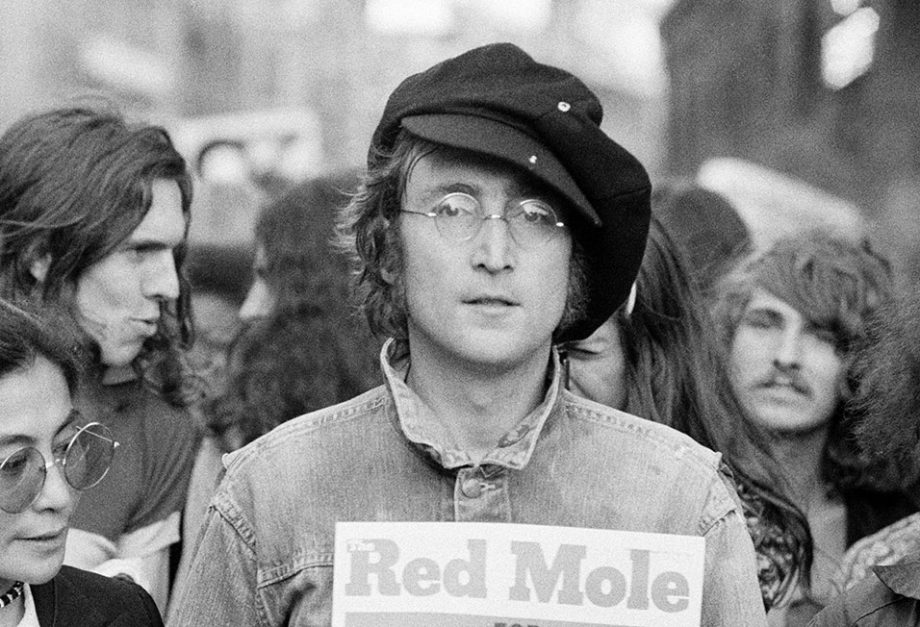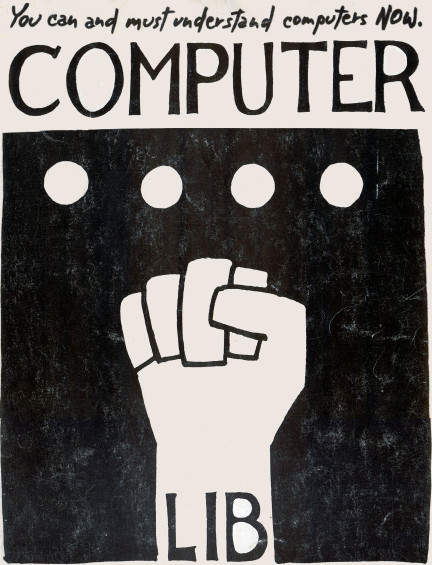After an initial overview of five civil rights movements that chose “Power to the People” as their motto, the second part of the series follows. It's about selected figures who have integrated the political slogan into their songs and books, and have thus identified with it personally: musicians who were also activists and a computer pioneer who called for computers to be understandable to all.
1. John Lennon and the Plastic Ono Band – Power to the People
The song “Power to the People” by John Lennon and the Plastic Ono Band was released in the UK on March 12, 1971. It was not the first political song by Lennon and Ono, but it was one that was to usher in a new phase in Lennon’s career and political stance. By the end of the 1960s, John Lennon and his second wife Yoko Ono were already organizing happenings together in order to campaign for world peace. Their “sit-ins” in Amsterdam and Toronto became particularly famous, as did their “War Is Over (If You Want It)” campaign in 1969. In Lennon’s music too, peace had long been a major theme, for example in “Give Peace a Chance” or “Instant Karma”.
In 1971, Lennon gave an interview to activists Tariq Ali and Robin Blackburn of the Marxist magazine “Red Mole”, as a result of which his views on possible forms of protest changed. Prior to that, Ali and Blackburn had criticized Lennon for his non-violent form of protest. The time had come to find bolder words, and the first result of this shift in his thinking was the song “Power to the People”, which Lennon wrote shortly after the interview.


John Lennon with the Red Mole Magazine, Image via nme.com
It’s the first time that he speaks explicitly of revolution, and yet the text remains non-specific. Instead, it describes a mood, evokes a very particular atmosphere. The refrain is perfect for singing along to – it’s like a hymn that can provide a soundtrack, to each and every revolutionary movement. On the cover of the single we see John Lennon wearing a Japanese police helmet.
The thrust is clear: The “Love is all you Need” mentality of the 1960s is now over. And in the albums that followed during the 1970s, Lennon becomes even more specific and critical. 1971 his album “Imagine” with its super-hit of the same name was released, followed in 1972 by “Some Time in New York City”, which is considered his most political, with the song “Woman is the Nigger of the World” among others, including songs about Angela Davis, John Sinclair or New York City, which feature allusions to the scene in Downtown Manhattan.

:format(jpeg):mode_rgb():quality(90)/discogs-images/R-513450-1282595689.jpeg.jpg)
Power to the People, Cover, Image via discogs.com
2. James Brown – Say it Loud, I’m Black and Proud / Soul Power
During the late 1960s James Brown was a role model for the American civil rights movement. This wasn’t something that came naturally. Admittedly, he was a confident, African-American artist who openly expressed his sexuality, but in early 1968 he annoyed all the black intellectuals among his fans by singing “America is my Home”. Legend would have it that the Black Panthers paid him a visit afterwards with the aim of talking him round. Even if this is merely legend, it was obvious to anyone that something had changed in James Brown’s political attitude: The grease in his hair gave way to an afro, and at the end of the same year he proclaimed his political leanings with the song “Say it Loud, I’m Black and Proud”. Parts of this became catchphrases for the Black Power movement – he had won over the black population once again while his white fans by contrast started to distance themselves from him.
:format(jpeg):mode_rgb():quality(90)/discogs-images/R-1484125-1305204244.jpeg.jpg)
Cover by James Brown – Say It Loud I'm Black And I'm Proud, Image via: discogs.com
As is typical of Brown’s music, the song consists primarily of rhythm instruments: drums, bass, horns and guitar. Brown screams out the text, he’s talking more than singing. “Now we demand a chance to do things for ourself / We’re tired of beatin’ our head against the wall / And workin’ for someone else.”
And power to the people? The slogan is tucked away in James Brown’s work. In 1971 he published his song “Soul Power”, which he modified particularly in concert. In a call-and-response style, the exchange of “What we want?”, “Soul power!” regularly became “What we want?”, “Power to the people!” James Brown and the Black Power movement may have merely flirted with each another, but for many his texts became a credo, and his songs became hymns.
Now we demand a chance to do things for ourself. We’re tired of beatin’ our head against the wall and workin’ for someone else.

3. Ted Nelson – Computer Power to the People
In 1974, American Ted Nelson published his book “Computer Lib / Dream Machines” with the subheading “You can and must understand computers NOW”. In this – or more precisely in the two books he wrote – Nelson combines a manual for using computers with political freedom and presents his cause under the motto “Computer power to the people! Down with the cybercrud”. Cybercrud is a term he coined, which is best explained as the incomprehensibility of the computer world. This was and remains Nelson’s cause: Computers – or rather a user interface – should be understandable to all within as short a time as possible.
Ted Nelson is a philosopher, but most importantly a pioneer of information technology, and since the very beginnings of micro- and personal computers has campaigned for the comprehensibility of these devices. In 1974, both the micro-computer (i.e. not a mainframe computer, but rather those that could be operated by individual persons) and the PC were on the way towards conquering the world. The Altair 8800, the first commercially successful micro-computer, was launched on the market shortly after Computer Lib.

Ted Nelson, Computer Lib / Dream Machines, Image via: thedigitalage.pbworks.com
It’s no surprise, then, that Nelson could not find a publisher for his book and had to have it printed at his own expense. The book was a manifesto for PC fans, hackers and computer hobbyists and is therefore considered the first ever book about personal computers. Like the Altair 8800 or the Apple II, engineering marvels that turned the existing computer order on its head, “Computer Lib” also contributed to furthering the concept of the computer as a personal and easily usable device.

